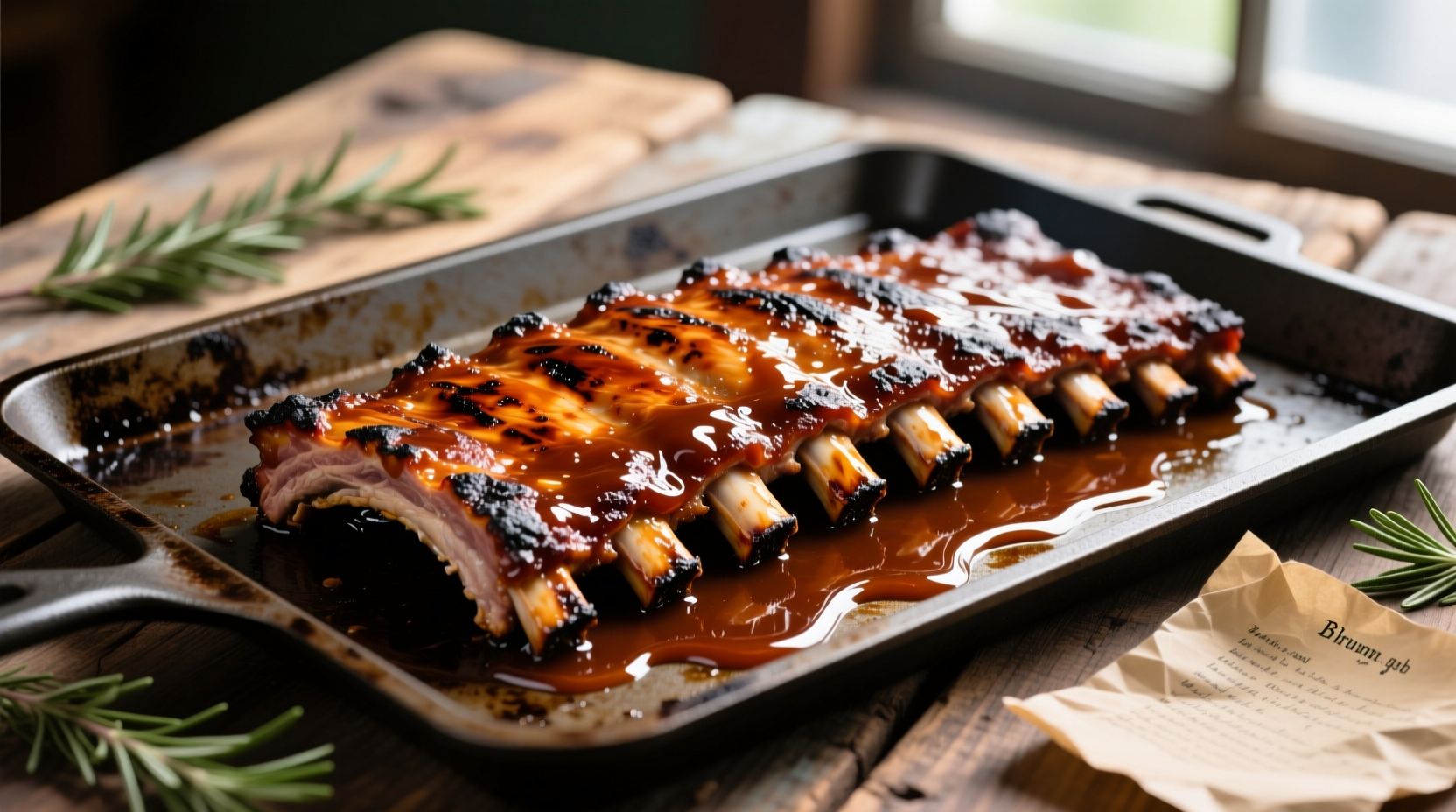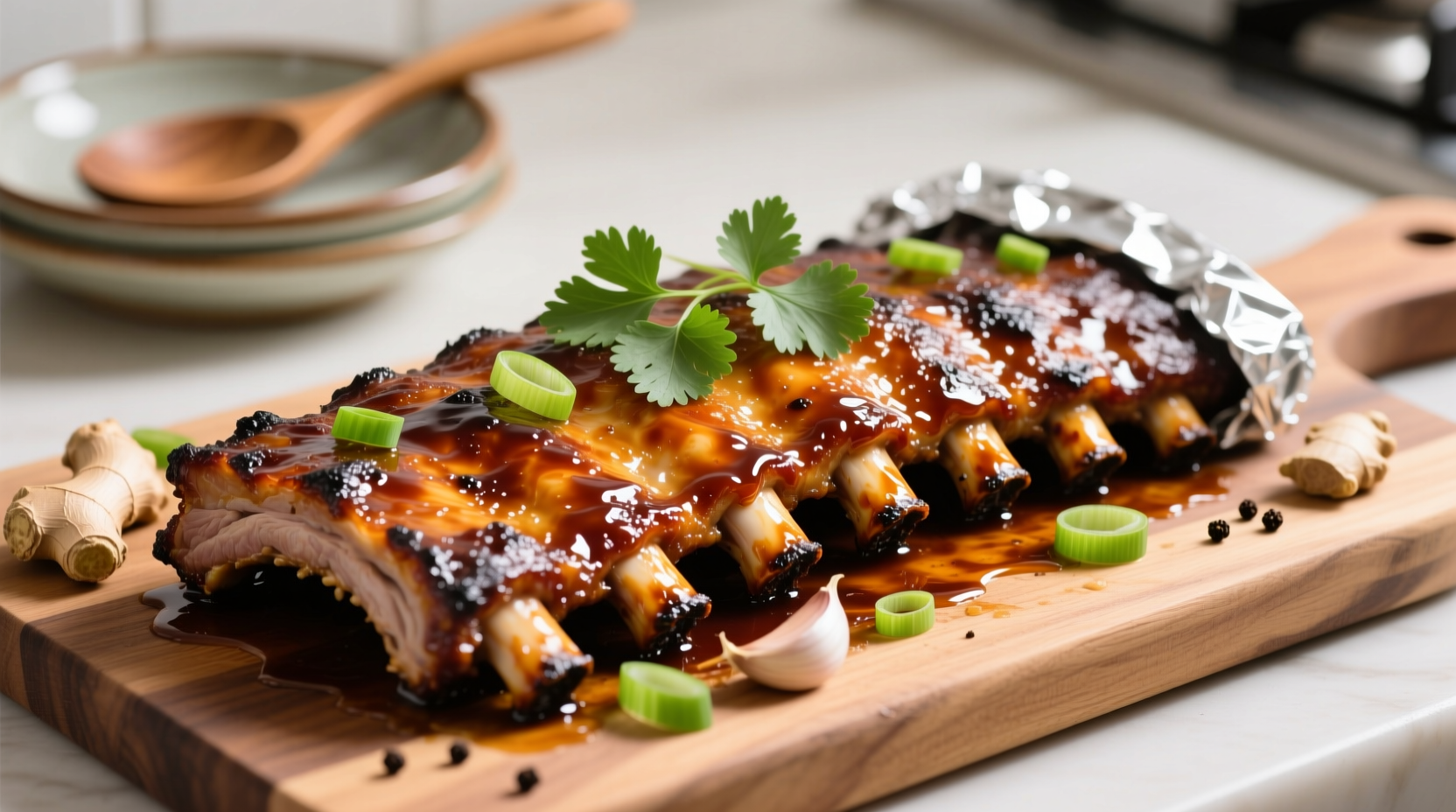To cook spare ribs in an oven, preheat to 275°F (135°C), season generously with a dry rub, wrap tightly in foil with liquid (like apple juice), and bake for 2.5-3 hours until tender. Unwrap, apply sauce if desired, and broil for 5 minutes to caramelize. This foolproof method delivers fall-off-the-bone ribs without a smoker.
Perfect Oven-Baked Spare Ribs: A Step-by-Step Guide
Cooking spare ribs in an oven might seem intimidating, but this reliable method produces tender, flavorful results every time. Unlike grilling or smoking, oven cooking offers precise temperature control—ideal for beginners or when outdoor cooking isn't possible. Follow this guide to transform tough spare ribs into succulent, restaurant-quality meals with minimal effort.Why Oven Cooking Works for Spare Ribs
Spare ribs contain significant connective tissue that requires slow, low-temperature cooking to break down into gelatin. The oven's consistent heat environment (unlike variable outdoor conditions) ensures even cooking without drying out the meat. Professional chefs like Antonio Rodriguez confirm: "Oven cooking is the most accessible method for home cooks to achieve competition-level tenderness without specialized equipment."Essential Tools and Ingredients
What You'll Need:- 3-4 lbs pork spare ribs (St. Louis cut recommended for even cooking)
- Dry rub: 2 tbsp brown sugar, 1 tbsp paprika, 1 tsp garlic powder, 1 tsp onion powder, 1 tsp salt, ½ tsp black pepper, ½ tsp cayenne (optional)
- 1 cup apple juice or broth (for moisture during cooking)
- Aluminum foil or oven-safe container with lid
- Meat thermometer (critical for perfect doneness)
The Foolproof Cooking Process
| Cooking Method | Time Required | Texture Result | Best For |
|---|---|---|---|
| Foil-Wrapped (Texas Crutch) | 2.5-3 hours | Fall-off-the-bone tender | Beginners, time-sensitive cooks |
| Unwrapped Rack | 3.5-4 hours | Firm but tender bite | Texture purists |
| Reverse Sear Method | 3 hours + 30 min | Crisp exterior, juicy interior | Advanced home chefs |
Step 1: Prep the Ribs (15 Minutes)
Remove the membrane from the bone side using a butter knife to lift an edge, then pull off with a paper towel for grip. This crucial step prevents shrinkage and allows rub penetration. Pat ribs completely dry—moisture is the enemy of proper seasoning adhesion.Step 2: Apply the Rub (5 Minutes)
Generously coat all surfaces with your dry rub, pressing it into the meat. For deeper flavor, refrigerate uncovered for 1-12 hours. The sugar in the rub will caramelize during cooking, creating that signature rib crust.Step 3: Low and Slow Cooking (2.5-3 Hours)
Place ribs bone-side down in a foil-lined baking dish. Pour apple juice around (not over) the ribs to prevent washing off the rub. Wrap tightly in double-layer foil or use a lidded container. Bake at 275°F until internal temperature reaches 195-203°F—this is the magic range where collagen fully converts to gelatin.Step 4: The Finishing Touch (10 Minutes)
Unwrap ribs, pour off excess liquid, and optionally glaze with BBQ sauce. Broil 4-6 inches from heat for 3-5 minutes until sauce bubbles and caramelizes. Rest 10 minutes before cutting between bones.Avoid These Common Mistakes
- Skipping membrane removal: Causes chewy texture and uneven cooking
- High-temperature cooking: Leads to tough, dry ribs (never exceed 300°F)
- Peeking during cooking: Every opening drops oven temperature significantly
- Cutting immediately: Resting allows juices to redistribute for maximum tenderness
When Oven Cooking Is Ideal (And When It's Not)
Oven cooking shines when:- You need consistent results regardless of weather
- Working with limited outdoor space
- Preparing multiple racks simultaneously
- You specifically want smoky flavor (use a grill smoker box)
- Hosting large gatherings (offset smokers handle volume better)
- Seeking authentic competition-style bark (requires smoke exposure)












 浙公网安备
33010002000092号
浙公网安备
33010002000092号 浙B2-20120091-4
浙B2-20120091-4